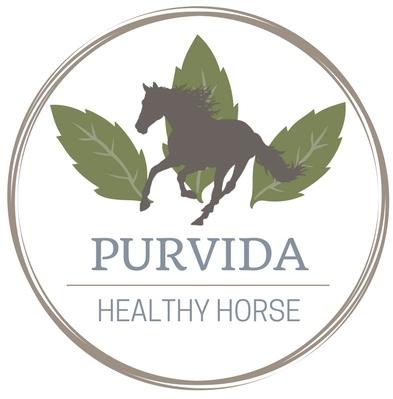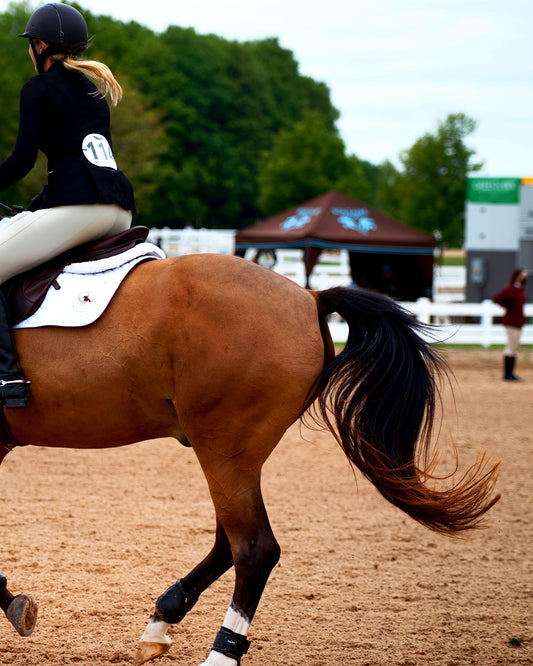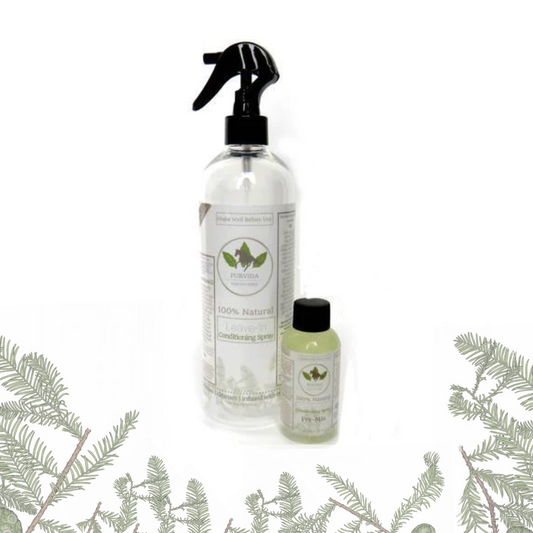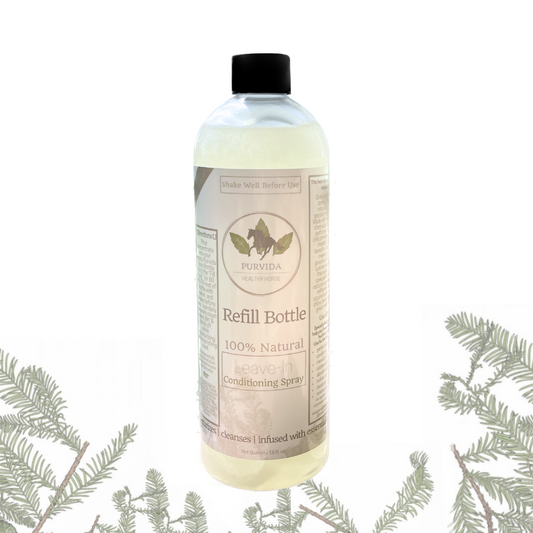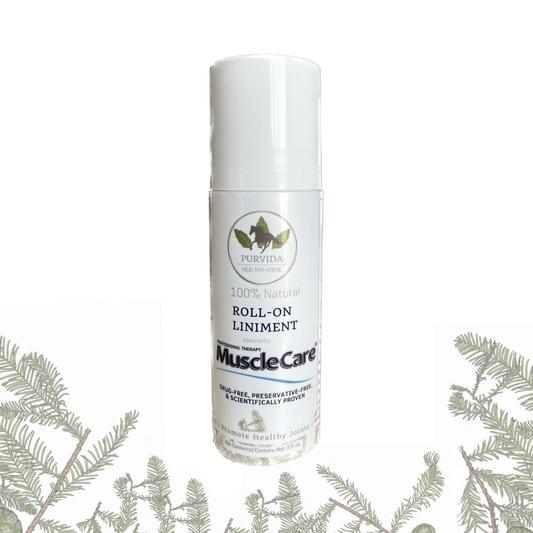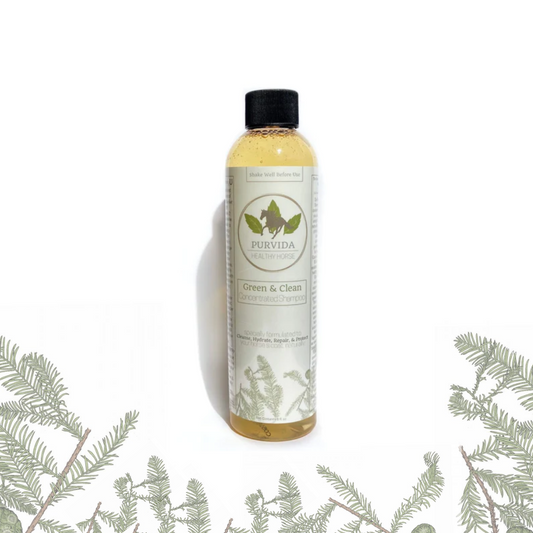Whether you and your horse are "weekend warriors" or dedicated competitors, you’re both athletes that stretch and strain your muscles during every ride–so learning how to care for and strengthen them will improve both yours and your horse’s physical condition and help reduce injury. Oftentimes, most of us don’t think about muscle care until we’re actually in pain or our horse shows obvious signs of discomfort, but keep reading for expert advice from chiropractor, Dr. Chris Oswald, on how properly caring for yours and your horse’s muscles can help alleviate pain and tension, improve flexibility, enhance performance, and decrease risk of injury.
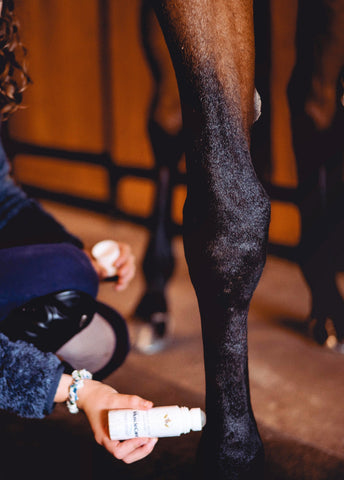
Muscle pain, stiffness and swelling are common conditions that may be either reduced or avoided when riders apply a muscle care regimen in addition to an appropriate training program. Just because you’re done building a sweat doesn’t mean that your workout is finished. What you do in the hour after you ride can be as important as what you do during it. Many of the steps you take to properly recover from a workout also contribute to essential body functions that keep you and your horse healthy, energized, and ready to ride. So, next time you’re tempted to crash on the couch after you ride, try these expert-backed post-workout recovery tips instead:
-
Stretch
Caring for your muscles begins with a proper warm-up. According to Dr. Chris, the best way to warm up muscles is to walk for 5 to 10 minutes to get the blood moving through the tissues and then do 15 to 20 minutes of stretching. For your horse, this can mean serpentines, changing direction, changing the bend, lateral movements, etc., but it’s important for you to warm-up your own muscles before you start warming up your horse’s. See below for some of Dr. Chris’ favorite stretches to help riders warm-up:
- lunge stretches for the hip flexor group
- straight leg raise or bend over to touch the toes for hamstrings
- stair stretch for the calves
- lateral bending with the arm in the air to stretch the lateral muscles
- spinal rotation for the smaller muscles of the spine
Click here to get Dr. Chris’s full list of stretches with detailed instructions and pictures e-mailed to you for FREE
“All stretches should be held for 30 to 60 seconds or until muscle relaxation. It’s important that this is done before exercise always and focus on the exercises that stretch the muscles that cause the most contraction when you’re cooling down. Then, hold the stretch until you feel it release completely.

After exercising, Dr. Chris says “ it’s important to give your muscles the proper time to cool down, which can be done by walking for 10-15 minutes, and then stretching for a good 15 minutes.” Dr. Chris recommends trying to do your cool down stretch immediately after the workout when the muscles are still warm and easier to stretch, rather than wait until the next day, and allow the muscle to set a new memory.”
-
Rest & Recover
When you or your horse get pushed physically, your bodies need time to rest and recover. Whether you have a tough lesson, or big competition, or just spend time working on something new, the muscle fibers get tiny tears in them. By allowing these tiny tears to heal, both you and your horse get stronger. On top of scheduling a couple of rest days into your weekly routine, muscle care products–such as liniments–can offer a wide range of benefits to help with recovery from work and let you and your horse keep training hard. Our Roll-On Liniment is expertly formulated to immediately reduce swelling and soreness of muscles and tendons, while aiding natural healing for both you and your horse. Dr. Chris, creator of the Roll-On Liniment recommends use on a daily basis as maintenance care when you’re training and shares with us on a scientific level exactly how it works:
“The uniqueness in the proprietary formula of the Roll-On Liniment is the Drive technology, where our chemists created a push technology. Rather than keeping the cold or hot feeling on the outside of the skin, we push our ingredients, primarily through magnesium, MSM, and glucosamine, through the skin and the connective tissue into the muscles, allowing for more effective pain relief, increased circulation, and reduced inflammation. Magnesium is the key element here as it allows the breaking of the Acton in myosin cross bridges allowing the muscles to relax and then re-engage when needed more effectively. It allows for better circulation, bringing food or fuel to the tissues so that your muscles can perform at their peak for longer.”
Another great way to give your riding muscles a chance to recover is through cross training. By doing a different activity every other day, you give all your muscles
-
Fuel and Hydrate
While drinking enough water may seem like a simple action, it impacts basically every aspect of our performance in the saddle. Staying hydrated increases energy, improves movement, recovery and agility, thermoregulation, and aids in mental clarity and activity – all of which can improve physical performance and reduce the risk of injuries.
A “huge issue with see with riders is that they’re not stopping regularly enough to rehydrate.” While it’s hard to carry a water bottle while you’re riding, this doesn’t make staying hydrated any less important. Dr. Chris recommends maintaining hydration levels through electrolytes.
Most of us have heard the term “electrolyte” before, and know it’s important, but if you’ve ever wondered what exactly they do, you’re not alone, but they do play an important role in helping your body stay hydrated while you're riding. Quite simply, electrolytes are minerals that have an electrical charge and play a central role in many bodily functions, specifically fluid balance. The important electrolytes for athletes are sodium, magnesium, calcium and potassium. Electrolytes are necessary for a variety of things, like hydration, muscle contraction and blood pressure. Certain electrolytes, like sodium and potassium, are lost in sweat and need to be replaced to maintain the proper fluid balance in the body. They also help with fluid absorption during exercise, making it easier for your body to make the most of the water you drink while riding.
Did you know you can find electrolytes in whole foods?
Instead of grabbing a sports drink, check out these natural alternatives to find the minerals both you and your horse need to keep performing at your peak:
Sodium |
This mineral aids in fluid retention and plays a role in nerve and muscle function, as well as blood volume and blood pressure control. Without enough sodium, blood pressure may drop or you can become dehydrated. |
If you need a boost in sodium, try adding some of these salty foods to your diet: Olives, Pickles, Soup, Table salt |
Calcium |
Calcium helps with nerve signaling, blood clotting, hormone secretion, muscle contraction, and normal heart function. Without ample calcium consumption, the body pulls calcium from the bones, causing them to weaken overtime. |
These foods contain at least 10% of the recommended daily amount of calcium in one serving: Dairy foods (milk, yogurt, cottage cheese, cheese), Tahini, Dried Figs, Chia Seeds, Leafy Greens, Fortified Oatmeal, Fortified Orange Juice, Enriched Milk Alternatives |
Magnesium |
While calcium helps muscles contract, magnesium causes them to relax. Magnesium also allows muscles to take in oxygen and plays a role in maintaining a normal heartbeat and muscle function. Click here for an informative article that elaborates more about magnesium and its role in healing the body. | Great sources of magnesium include: Spinach, Chard, Edamame/soy, Quinoa, Beans, Lentils, Salmon, Nuts & Seeds – pumpkin seeds, sunflower seeds/butter, almonds, flax seeds, cashews, chia seeds |
Potassium |
A vital part of hydration and muscle contraction (including heart muscles, digestive muscles, etc.), potassium plays a major role in proper heart function. Similar to the other electrolytes, a potassium deficiency can cause muscle weakness, cramping, and abnormal heart rhythms. | You can find potassium in: Dairy, Oranges, Bananas, Winter Squash, Potatoes, Broccoli, Orange Juice, Lentils, Halibut, Salmon, Apricots |
By incorporating whole grains, fruits, veggies, lean sources of protein, and adequate water, most of us can meet our electrolyte needs. Be sure to drink water before, during, and after your workouts to ensure proper hydration, energy, and muscle function. A balanced post-workout meal or snack can easily replace lost electrolytes and aid in recovery.
Meet Dr. Chris:

Dr. Chris Oswald founded the Centre for Fitness, Health and Performance in 1988 with the goal of establishing a science-based wellness collaborative faculty where chiropractors, dentists, physiotherapists, massage therapists, naturopaths, acupuncturists, and leading medical specialists would work together to diagnose, treat and manage the most common issues of the 21st century. Currently, his team of 35 has become one of the most preeminent health and wellness facilities in the country. Dr. Chris Oswald’s decision to create his own line of premium scientifically based ergonomic, health, and wellness products was based on his dissatisfaction and frustration with existing products that fell short of their claims. His client base of 20,000 patients serves as an ongoing focus group for product ideas and testing based on real consumer needs.
